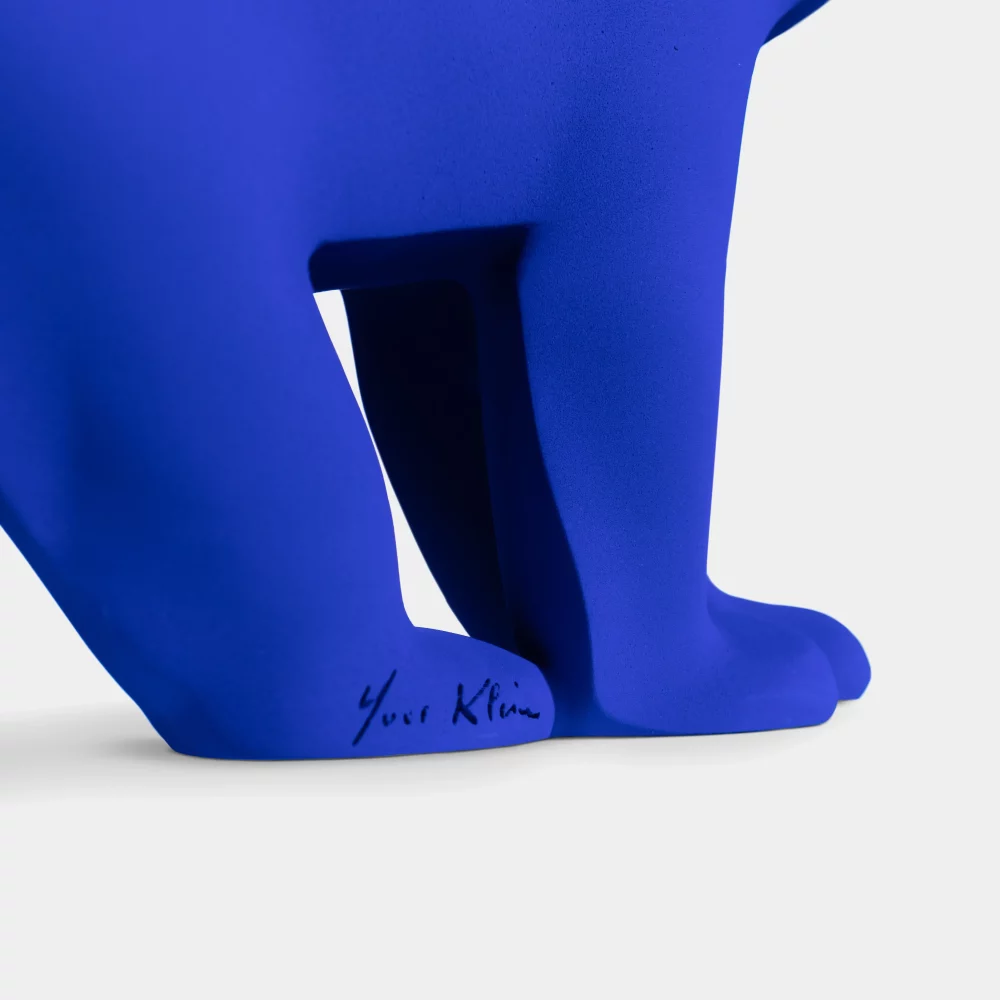
Yves Klein tirelessly sought the essence of art and wanted to expose its immateriality. The artist thus found in sculpture a true space of freedom where the monochrome permeates the three-dimensional space.In 1962 Yves Klein covered universally admired masterpieces with his IKB blue: the Venus of Alexandria, the Victory of Samothrace or Michelangelo’s Dying Slave. They become incarnate objects, sensitive presences.In 2022, 100 years after its success at the Salon d’Automne, François Pompon’s White Bear meets Yves Klein’s Blue. One has captured the essence of form, the other that of color and beyond, the essence of art. The art of reality, of freedom, of life.
Yves Klein
(1928-1962)
Aventure
monochrome

1961 ©Gilles Raysse ©Succession Yves Klein c/o ADAGP Paris
Yves Klein, born in 1928 in Nice, conceives the work of art as the trace of the artist’s communication with the world. According to him, beauty already exists, in an invisible state. In 1954, he began his “Monochrome Adventure”, in order to “free color from the prison of the line”. In his quest for immateriality and infinity, Yves Klein adopted ultramarine blue as his vehicle. From this more-than-blue blue, which he named “IKB” (International Klein Blue), radiated a colored vibration that did not only engage the viewer’s gaze: it was the mind that saw with the eyes. Between May 1954 and June 6, 1962, the date of his death, Yves Klein burned his life to produce a flamboyant work that marked his era and still shines today.
François Pompon
(1855-1933)

François Pompon was born in 1855 in Saulieu, in the Morvan region, in the heart of Burgundy. At the age of fifteen, he was apprenticed as a stone cutter to marble masons, and then attended evening classes at the École des Beaux-Arts in Dijon and the École Nationale des Arts Décoratifs in Paris. He then worked as a practitioner for other sculptors, including Auguste Rodin (for whom he became head of the workshop) and Camille Claudel. In 1905, François Pompon definitively opted for animal beauty and the simplification of forms. In 1922, it is the glory: he presents at the Salon “The White Bear”. Success never left him. When he died in 1933, François Pompon bequeathed nearly 3000 works to the State. They can be admired in Dijon, Saulieu and the Musée d’Orsay in Paris. His achievements will have brought animal sculpture into the era of modernity.



